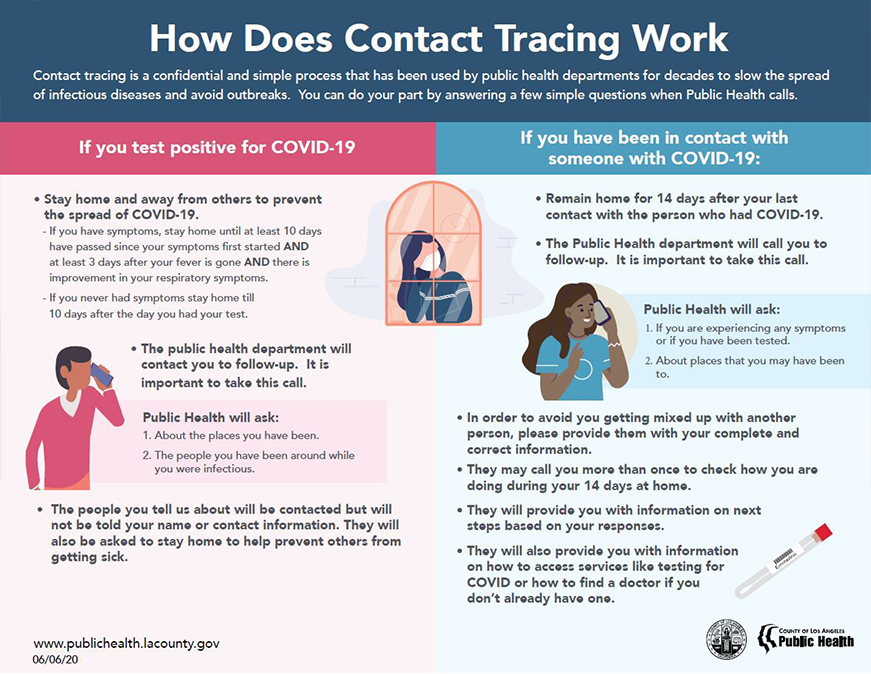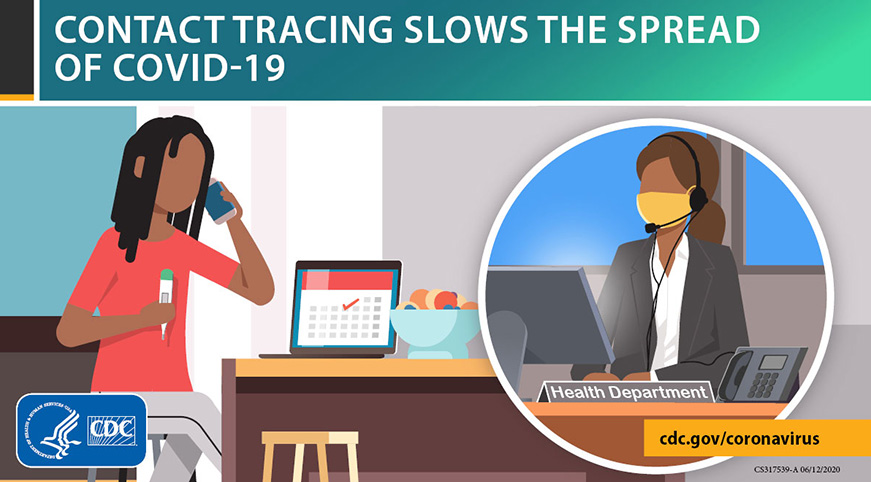Posted by Dr. Thomas Horowitz
Since the onset of the coronavirus/COVID-19 pandemic, you may have come across the term ‘contact tracing’ in the news, social media, or websites of health agencies like the Centers for Disease Control and Prevention (CDC) and World Health Organization (WHO). For decades, public health departments have used a simple process called contact tracing to prevent the spread of infectious diseases and curb outbreaks.
What is Contact Tracing for COVID-19?
Contact tracing is a joint effort by the state and county health departments of contacting and notifying all people who’ve had close contact with someone who tested positive for COVID-19. It is an essential disease control measure to help slow the transmission of COVID-19 and protect our family, friends, and communities. As the number of COVID-19 cases continue to rise throughout Los Angeles, contact tracing is essential to identify the source of infection and inform those individuals who may have been exposed.
What is Close Contact?
According to the CDC, close contact for COVID-19 is defined as “any individual who was within 6 feet (2 meters) of an infected person for at least 15 minutes starting from 2 days before illness onset (or, for asymptomatic patients, 2 days prior to positive specimen collection) until the time the patient is isolated.”1
How Does Contact Tracing Work?

Once an individual tests positive for COVID-19, the health department asks the individual about people he/she has recently had close contact with. After identifying the close contacts, contact tracers from the health department will call them to notify of their possible exposure to the virus. They may ask about symptoms, where they have been, how did they get there (mode of transport), where do they work or other people they may have had contact with. The contact tracer may offer testing and quarantine/isolation instructions.
The contact tracing process is confidential and contact tracers will not ask for your social security number, insurance information, credit card details or any other personal financial information. If they ask you any of these details, you should immediately hang up as you are talking to a fraudulent agency/individual. You can report the call to the city attorney, if you note the origin number. If the contact tracer offers a website or sends you a link, treat it like any other spam and delete it. Detailed information regarding contact tracing can be found on the official state or county website.
Until a vaccine is identified, standard universal precautions like wearing a face covering/face mask, hand hygiene, social distancing along with measures like contact tracing can help reduce the spread of COVID-19.
1 Centers for Disease Control and Prevention. Contact Tracing for COVID-19. Retrieved from https://www.cdc.gov/coronavirus/2019-ncov/php/contact-tracing/contact-tracing-plan/contact-tracing.html
Go to our Blog
 ENGLISH
ENGLISH KOREAN
KOREAN Spanish
Spanish RUSSIAN
RUSSIAN Armenian
Armenian FILIPINO
FILIPINO Chinese (Simplified)
Chinese (Simplified) Chinese (Traditional)
Chinese (Traditional)

최신댓글